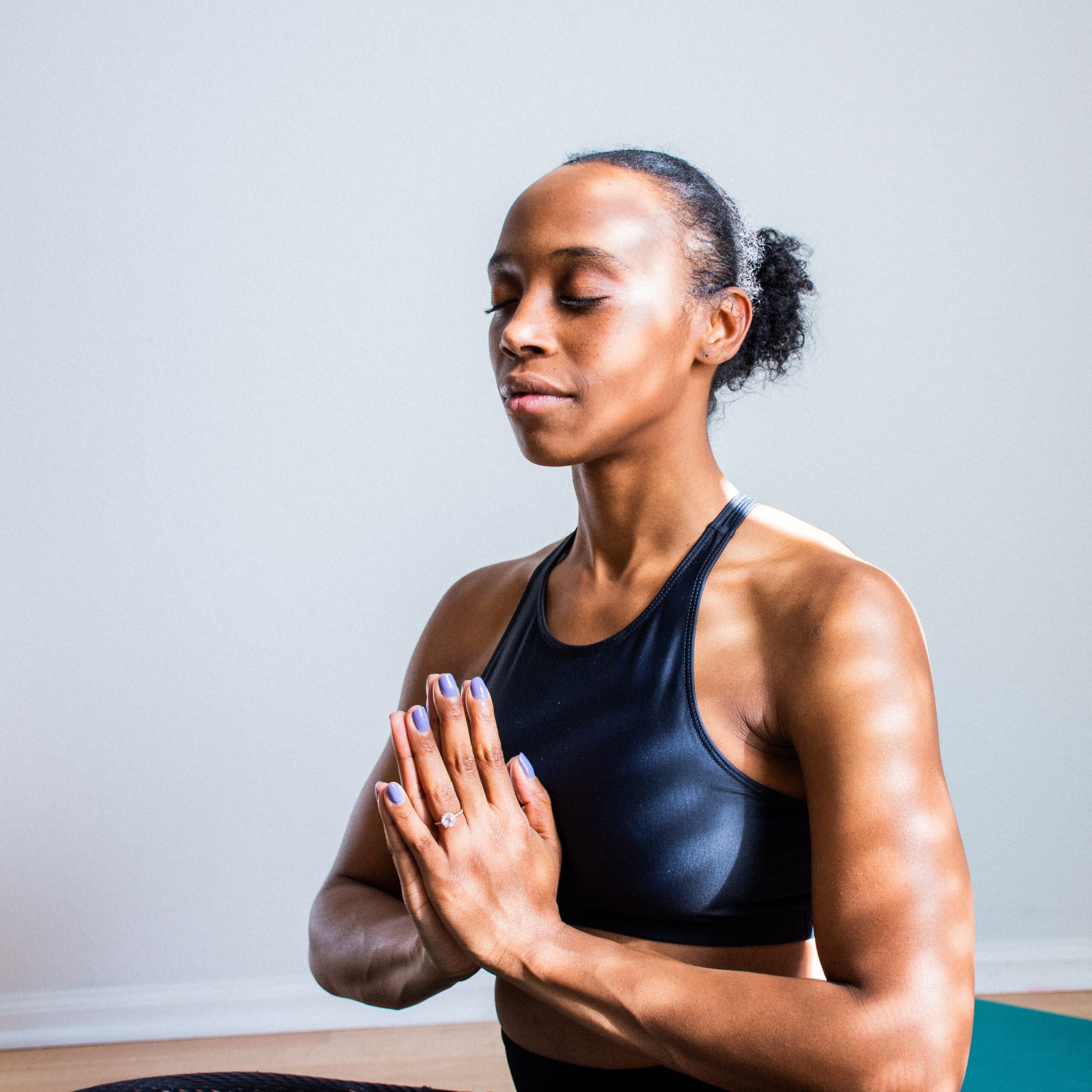In this article, we will explore the fascinating world of the Muscle Latissimus Dorsi. Known as the largest muscle in your upper body, the Latissimus Dorsi plays a vital role in various movements like pulling, rotating, and even stabilizing your torso. From assisting in everyday tasks to enhancing athletic performance, this powerful muscle provides strength, mobility, and balance. So, let’s discover the incredible capabilities of the Muscle Latissimus Dorsi and understand how it contributes to your overall well-being.

The Anatomy of the Latissimus Dorsi
The latissimus dorsi, also known as the “lats,” is a large muscle located on the back. It is one of the largest muscles in the upper body and contributes to the overall strength and stability of the back and shoulders. Understanding the anatomy of the latissimus dorsi is crucial for targeting this muscle effectively during workouts.
Origin
The latissimus dorsi originates from several places including the spinous processes of the lower thoracic and all lumbar vertebrae, the posterior iliac crest, and the thoracolumbar fascia. This broad origin enables the latissimus dorsi to provide stability and support to the spine.
Insertion
The latissimus dorsi inserts into the intertubercular groove of the humerus, specifically the anterior portion. This insertion point allows the muscle to play a significant role in shoulder extension, adduction, and internal rotation.
Function
The primary function of the latissimus dorsi is to perform powerful movements involving the shoulder joint. It helps in actions such as pulling, rowing, and swimming strokes. The latissimus dorsi also assists in stabilizing the back and maintaining good posture.
Blood Supply
The blood supply to the latissimus dorsi muscle comes from the thoracodorsal artery, a branch of the subscapular artery. This artery provides oxygenated blood, essential for the muscle’s proper functioning during exercise and daily activities.
Innervation
The latissimus dorsi is innervated by the thoracodorsal nerve, which originates from the brachial plexus. This nerve supplies the muscle with the necessary signals to contract and perform its various functions.
Exercises Targeting the Latissimus Dorsi
If you’re looking to strengthen and develop your latissimus dorsi, there are several exercises specifically designed to target this muscle group.
Pull-Ups
Pull-ups are an excellent compound exercise that heavily targets the latissimus dorsi. To perform a pull-up, hang from a bar with your palms facing away from you and your hands slightly wider than shoulder-width apart. Engage your core and pull yourself up until your chin is above the bar, then lower yourself back down with control. Aim for multiple sets and repetitions to challenge and strengthen your latissimus dorsi.
Lat Pulldowns
Lat pulldowns are another effective exercise for targeting the latissimus dorsi. Sit at a lat pulldown machine and grip the wide bar with your palms facing away from you. Lean back slightly and pull the bar down towards your chest while keeping your elbows pointing down and squeezing your shoulder blades together. Slowly release the bar back up to the starting position and repeat. Adjust the weight accordingly to challenge yourself while maintaining proper form.
Rowing
Rowing exercises, such as bent-over rows or seated cable rows, are excellent for engaging the latissimus dorsi. Whether using dumbbells, a barbell, or a cable machine, hinge forward at the hips with a slight bend in your knees. Keep your back straight and pull the weight towards your midsection, imagining you are rowing a boat. Squeeze your shoulder blades together at the end of the movement and then slowly release back to the starting position.
Deadlifts
While deadlifts primarily target the posterior chain, they also engage the latissimus dorsi muscles. To perform a deadlift, stand with your feet shoulder-width apart and grip a barbell with your hands just outside of your legs. Keep your back straight, engage your core, and lift the barbell by standing up, pushing your hips forward, and squeezing your glutes. Lower the barbell back down with control while maintaining proper form. Deadlifts are a challenging exercise, so it’s essential to start with light weights and gradually increase as your strength improves.
Latissimus Dorsi Injuries and Prevention
Despite its strength and importance, the latissimus dorsi is susceptible to injury if not properly cared for. Understanding common injuries and preventative measures can help keep your latissimus dorsi healthy and functioning optimally.
Strains
Strains in the latissimus dorsi can occur due to overuse or sudden excessive force. Symptoms of a strain may include pain, swelling, and limited range of motion. To prevent strains, it’s essential to warm up adequately before engaging in exercise, maintain proper form and technique during workouts, and gradually increase intensity and load.
Tendonitis
Tendonitis in the latissimus dorsi can occur due to repetitive movements or excessive stress on the muscle. Symptoms may include pain, tenderness, and inflammation. To prevent tendonitis, it’s crucial to include proper rest and recovery days in your training routine, avoid overtraining, and incorporate flexibility exercises to keep the muscle and tendons supple.
Preventing Injuries
To prevent injuries to the latissimus dorsi, it’s crucial to prioritize proper form and technique during exercises. This includes maintaining a neutral spine, avoiding excessive twisting or jerking movements, and using appropriate weights and resistance levels. Additionally, incorporating a well-rounded exercise routine that includes strength training, stretching, and rest days is key to keeping the latissimus dorsi healthy and resilient.
Latissimus Dorsi Stretching and Strengthening
Stretching and strengthening exercises are essential for maintaining the flexibility and strength of the latissimus dorsi.
Stretching Exercises
To effectively stretch the latissimus dorsi, incorporate the following exercises into your routine:
-
Standing Lat Stretch: Stand with your feet shoulder-width apart and interlace your fingers above your head. Lean to one side, feeling a gentle stretch on the opposite latissimus dorsi. Hold for 20-30 seconds, then repeat on the other side.
-
Seated Lat Stretch: Sit on the floor with your legs extended in front of you. Reach your arms forward and, keeping your back straight, try to touch your toes. Feel the stretch in your entire back, including the latissimus dorsi. Hold for 20-30 seconds.
Strengthening Exercises
To strengthen the latissimus dorsi, incorporate the following exercises into your routine:
-
Lat Pulldowns: As mentioned earlier, lat pulldowns are a fantastic exercise for targeting and strengthening the latissimus dorsi. Remember to adjust the weight accordingly and focus on using proper form throughout the movement.
-
Bent-Over Rows: This exercise can be done with barbells, dumbbells, or resistance bands. Bend your knees slightly, hinge forward at the hips, and maintain a straight back. Pull the weight towards your midsection, engaging your latissimus dorsi throughout the movement.

Latissimus Dorsi in Sports and Athletics
The latissimus dorsi muscle plays a significant role in various sports and athletic activities. Here are some examples:
Swimming
Swimming heavily relies on the latissimus dorsi for propulsion and stability in the water. The latissimus dorsi provides the pulling power necessary for efficient freestyle, butterfly, and backstroke swimming techniques. Regularly targeting and strengthening the latissimus dorsi can enhance swimming performance and prevent injuries.
Gymnastics
In gymnastics, the latissimus dorsi is engaged during various movements such as pull-ups, straight arm pulldowns, and swinging on the uneven bars or rings. A strong and flexible latissimus dorsi is essential for supporting the gymnast’s body weight and executing complex maneuvers with control and precision.
Baseball
In baseball, the latissimus dorsi comes into play when throwing, swinging, and even during fielding movements. A strong and powerful latissimus dorsi helps generate force and speed in throwing and hitting, as well as providing stability and strength during defensive actions.
Common Mistakes in Latissimus Dorsi Training
To maximize the effectiveness of your latissimus dorsi training, it’s essential to avoid common mistakes that can hinder progress and increase the risk of injury.
Improper Form
One of the most common mistakes in latissimus dorsi training is using improper form. This includes using excessive momentum, rounding the back, or failing to engage the lats properly during exercises. It’s crucial to prioritize proper form and technique to ensure the latissimus dorsi is being effectively targeted and trained.
Overtraining
Overtraining the latissimus dorsi can lead to fatigue, decreased performance, and an increased risk of injury. It’s important to allow adequate rest and recovery days between intense workouts targeting this muscle group. Listen to your body and give it the time it needs to recover and rebuild.
Lack of Variation
Repetitive training with the same exercises can lead to a plateau in progress and diminish the overall effectiveness of your latissimus dorsi training. Incorporating a variety of exercises that target the muscle at different angles and with varying resistance levels can help prevent boredom, stimulate muscle growth, and ensure overall balance and strength.

Latissimus Dorsi and Posture
The latissimus dorsi plays a crucial role in maintaining good posture and spinal alignment. Here’s how it affects posture and exercises that can help correct any imbalances.
Effect on Posture
When the latissimus dorsi is weak or imbalanced, it can lead to poor posture. Weak latissimus dorsi muscles can contribute to rounded shoulders and an exaggerated thoracic curve, commonly known as a hunched back. Strengthening and stretching the latissimus dorsi can help improve posture and prevent potential pain or discomfort associated with poor alignment.
Exercises for Posture Correction
To correct and improve posture, incorporate the following exercises:
-
Scapular Retraction: Stand with your back against a wall, keeping your head, shoulders, and hips in contact with the wall. Gently retract your shoulder blades by squeezing them together. Hold for a few seconds, then release. Repeat this exercise multiple times throughout the day to maintain proper scapular alignment.
-
Prone Cobra: Lie face down on an exercise mat with your legs extended and your arms by your sides. Slowly raise your head, chest, and arms off the ground, squeezing your shoulder blades together. Hold this position for a few seconds, then lower back down. Repeat for several repetitions to strengthen the muscles responsible for good posture.
Latissimus Dorsi and Back Pain
The latissimus dorsi can be involved in the development of back pain, but it can also play a role in relieving pain and promoting a healthy spine.
Role in Back Pain
When the latissimus dorsi is tight or strained, it can contribute to back pain. Overuse, poor posture, or inadequate stretching and strengthening can lead to muscular imbalances and increased stress on the spine. It’s important to address any pain or discomfort in the back promptly and seek professional guidance if needed.
Exercises for Back Pain Relief
To relieve back pain and strengthen the latissimus dorsi, consider the following exercises:
-
Cat-Camel Stretch: Start on all fours with your hands directly under your shoulders and your knees under your hips. Arch your back up towards the ceiling while tucking your chin towards your chest (Cat Pose). Then, drop your belly towards the floor, lift your chest, and look up (Camel Pose). Move slowly and mindfully between both positions, focusing on stretching and mobilizing the entire spine.
-
Bird Dog: Begin on all fours with your hands directly under your shoulders and your knees under your hips. Extend your right arm forward while simultaneously extending your left leg backward. Keep your core engaged and your back straight. Hold for a few seconds, then switch sides. This exercise helps strengthen the entire back, including the latissimus dorsi.

Latissimus Dorsi and Shoulder Stability
The latissimus dorsi plays a crucial role in shoulder stability, particularly in overhead movements and weight-bearing activities. Here’s how it contributes to shoulder stability and exercises that can help enhance its function.
Contribution to Shoulder Stability
The latissimus dorsi, along with other surrounding muscles, provides stability to the shoulder joint. It helps prevent excessive movement, injury, and instability during overhead motions, such as lifting weights overhead or performing handstands. A strong and engaged latissimus dorsi assists in keeping the shoulder joint in its optimal position and promotes proper movement mechanics.
Exercises for Shoulder Strength
To strengthen the latissimus dorsi and improve shoulder stability, include the following exercises:
-
Push-Ups: Traditional push-ups engage the latissimus dorsi as a stabilizer muscle, especially during the lowering phase. Perform push-ups with proper form, ensuring a straight line from your head to your heels, and engage your core and lats throughout the movement.
-
Yoga Dolphin Pose: Start in a modified downward-facing dog position with your forearms resting on the ground and your palms facing down. Push your forearms into the floor, engage your lats, and lift your hips up and back, creating an inverted V shape with your body. Hold this position for a few seconds, focusing on engaging the latissimus dorsi and stabilizing the shoulders.
Latissimus Dorsi and Upper Body Aesthetics
The latissimus dorsi is a key muscle for achieving a well-rounded and aesthetically pleasing upper body. Here are some tips and exercises to help create definition and size in the latissimus dorsi.
Building a V-Shaped Back
The latissimus dorsi is often referred to as the “V-shaped muscle” due to its contribution to a wide, tapering upper body appearance. To build a V-shaped back, incorporate the following exercises:
-
Wide-Grip Pull-Ups: Perform pull-ups with a wider-than-shoulder-width grip to specifically target the lats and widen the back. Focus on engaging the latissimus dorsi throughout the movement and aim for multiple sets and repetitions.
-
Bent-Over Rows: As mentioned earlier, bent-over rows engage the latissimus dorsi and contribute to back muscle development. Use an overhand grip and focus on squeezing your shoulder blades together at the top of the movement to maximize lat engagement.
Creating Definition and Size
To create definition and size in the latissimus dorsi, it’s important to incorporate both strength training and proper nutrition. Along with the exercises mentioned above, consider the following tips:
-
Progressive Overload: Gradually increase the intensity, volume, and resistance of your latissimus dorsi exercises over time. This progressive overload stimulates muscle growth and definition.
-
Balanced Nutrition: Ensure you are consuming enough protein and calories to support muscle growth and repair. Include lean protein sources, whole grains, fruits, and vegetables in your diet to provide the necessary nutrients for muscle development.
With consistent training, proper form, and a balanced diet, you can achieve a well-defined and strong latissimus dorsi, enhancing your overall upper body aesthetics.
In conclusion, understanding the anatomy, function, and importance of the latissimus dorsi muscle is key to targeting it effectively during workouts. By incorporating a variety of exercises, maintaining proper form, and addressing any imbalances or injuries, you can strengthen and optimize the latissimus dorsi’s role in your overall posture, performance, and aesthetic goals. Remember to listen to your body, seek professional guidance if needed, and enjoy the process of exploring and unlocking the full potential of your latissimus dorsi muscle.



